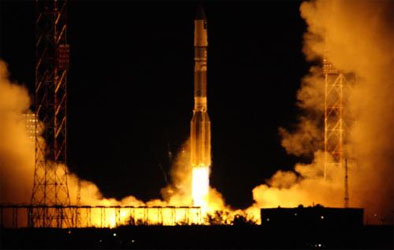Satellite for Multimedia Internet Access Launched
ViaSat-1 is designed to transform the economics and quality of service that satellite broadband can provide. The technology is expected to elevate satellite into a competitive position in the broadband service marketplace, with the capacity to serve the accelerating growth in bandwidth demand for multimedia Internet access over the next decade.
The complete system also includes the ViaSat SurfBeam 2 ground system, already delivering high-speed broadband to Europe via Eutelsat’s KA-SAT.
ViaSat Inc. has announced that International Launch Services has successfully launched ViaSat-1, the highest capacity satellite in the world. The Proton M launch vehicle lifted off from pad 39 at the Baikonur Cosmodrome, Kazakhstan, at 11:48 am (PDT) October 19, followed by spacecraft separation from the launch vehicle at 9:12 pm, signal acquisition shortly thereafter, and finally deployment of both the north and south solar arrays.
“The ViaSat-1 launch is a big step in fulfilling our vision for advanced Ka-band networks. We aim to begin consumer service by the end of 2011, and in-flight Wi-Fi service on JetBlue next year, along with several other new, exciting applications,” said Mark Dankberg, chairman and CEO of ViaSat.
Once on station, the ViaSat-1 high-capacity Ka-band spot beam satellite will include coverage over North America and Hawaii, enabling a variety of new, high-speed broadband services for WildBlue in the U.S. and Xplornet through Telesat in Canada.
ViaSat-1 joins WildBlue-1, Anik F2, and AMC-15 as capacity available for provision of WildBlue high-speed Internet access across America.
ViaSat delivers communications, Internet, and remote network access to fixed sites or on-the-move.






